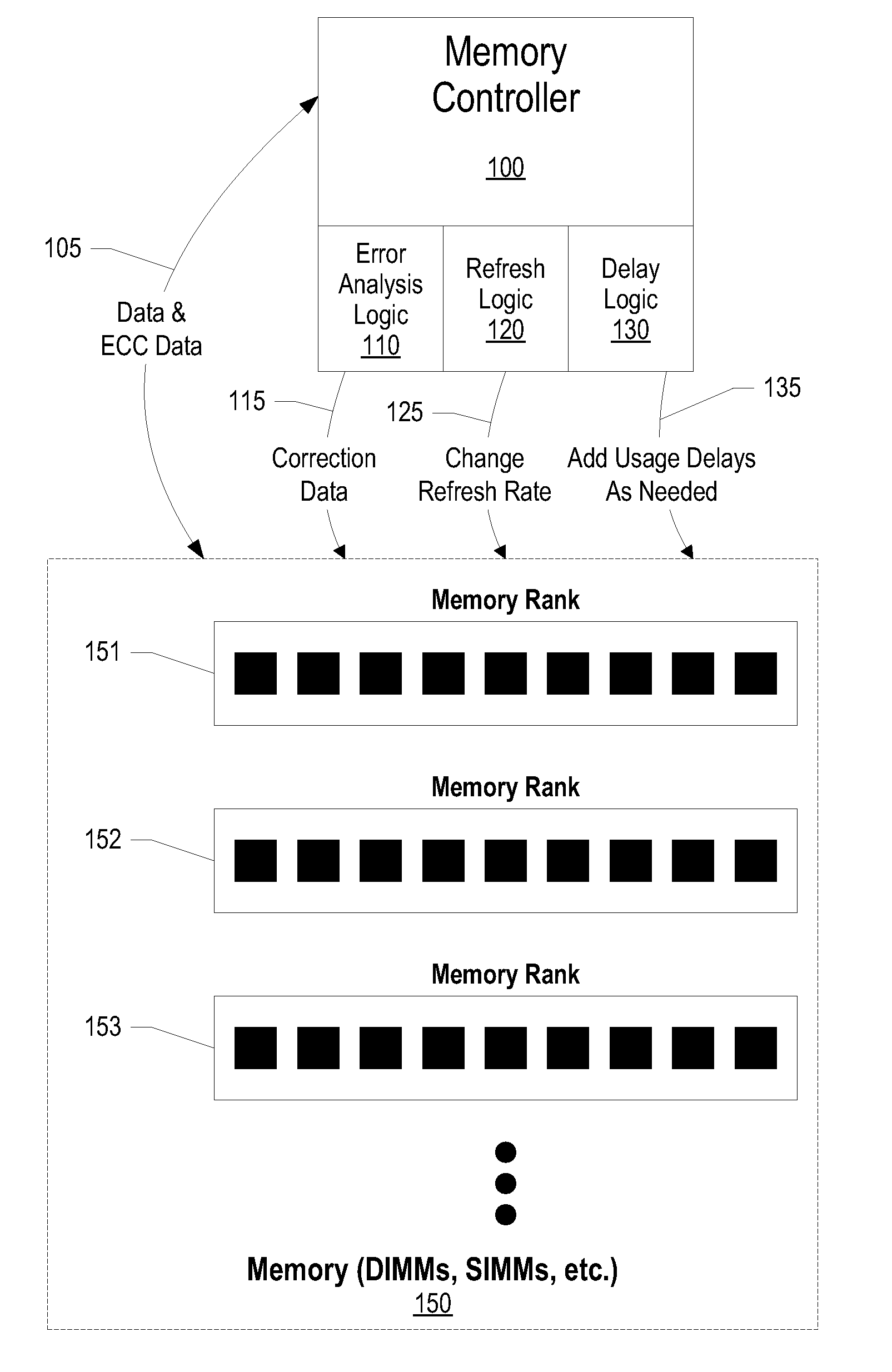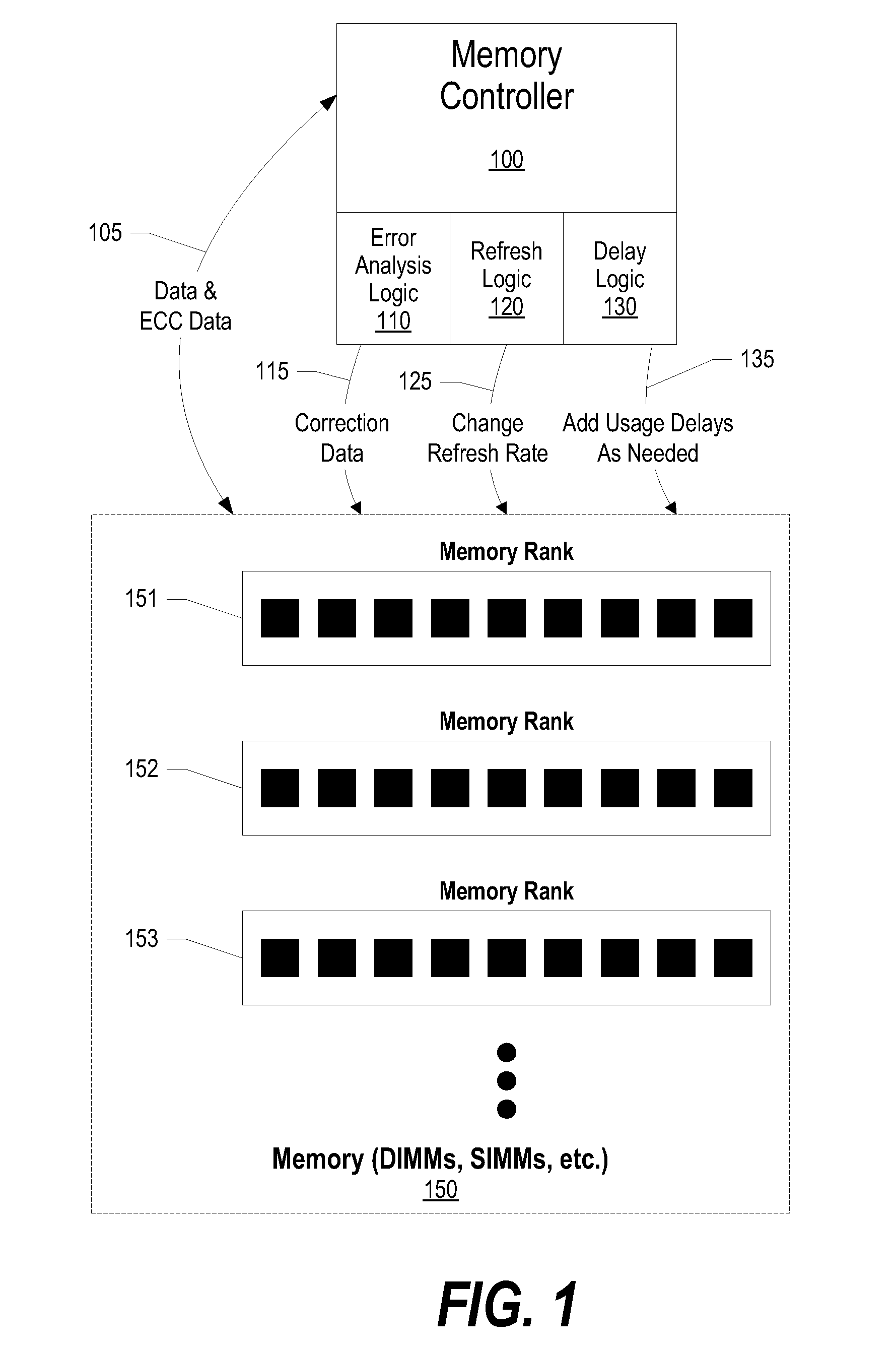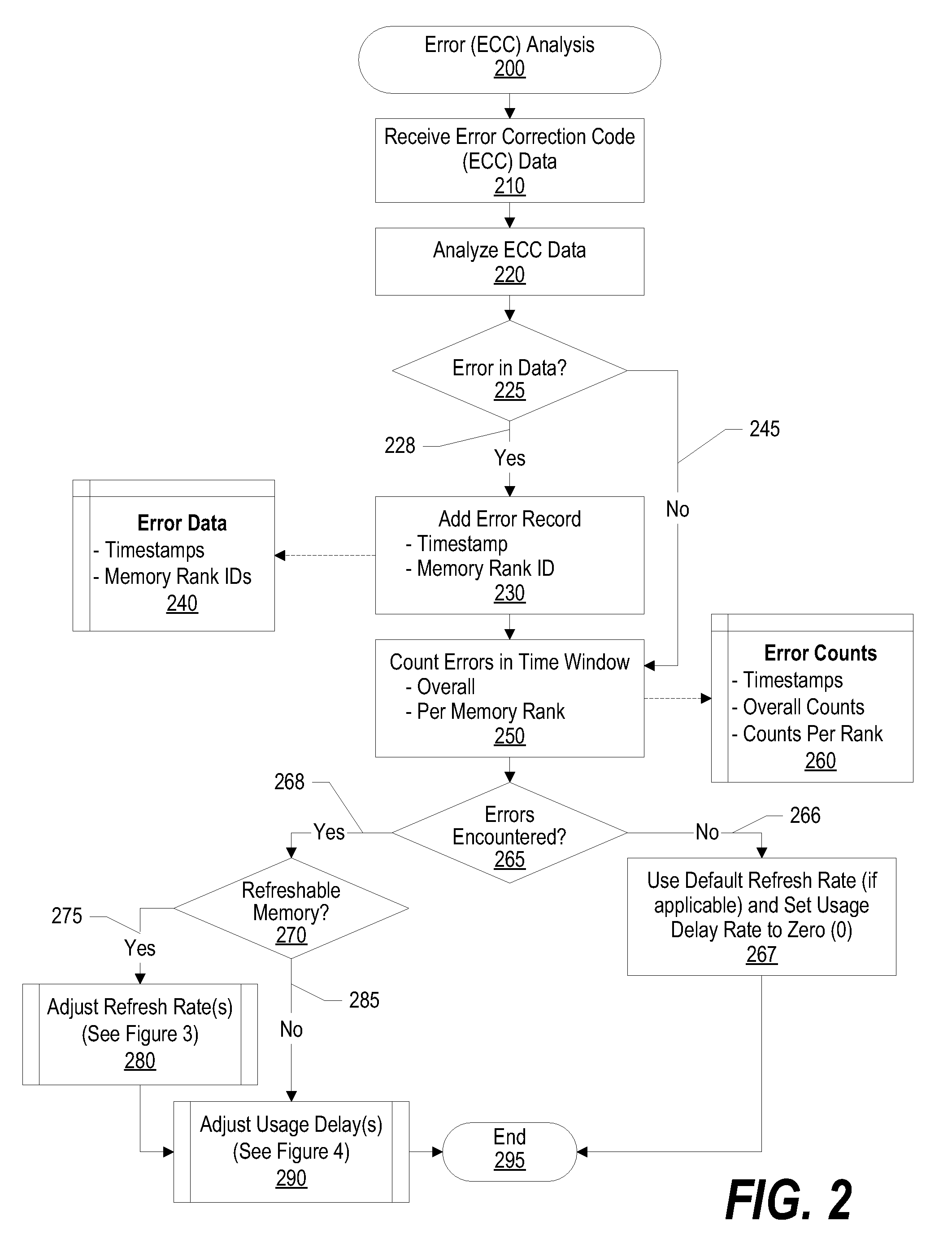System and method for using bit errors from memory to alter memory command stream
- Summary
- Abstract
- Description
- Claims
- Application Information
AI Technical Summary
Benefits of technology
Problems solved by technology
Method used
Image
Examples
Embodiment Construction
[0022]The following is intended to provide a detailed description of an example of the invention and should not be taken to be limiting of the invention itself. Rather, any number of variations may fall within the scope of the invention, which is defined in the claims following the description.
[0023]FIG. 1 is a component-level diagram showing a memory controller interacting with memory. Memory controller 100 reads and writes data to memory 150. In one embodiment, memory 150 includes one or more memory ranks (memory ranks 151, 152, 153 . . . ). After data and error correction code (105) is written to memory 150, memory controller reads the error correction code and determines whether bit errors are present in the stored data by executing error analysis logic 110. One example of error correction code is a simple checksum with error analysis logic 110 comparing the checksum of data stored a memory location with the checksum that was stored with the data. Small bit errors identified by ...
PUM
 Login to View More
Login to View More Abstract
Description
Claims
Application Information
 Login to View More
Login to View More - R&D
- Intellectual Property
- Life Sciences
- Materials
- Tech Scout
- Unparalleled Data Quality
- Higher Quality Content
- 60% Fewer Hallucinations
Browse by: Latest US Patents, China's latest patents, Technical Efficacy Thesaurus, Application Domain, Technology Topic, Popular Technical Reports.
© 2025 PatSnap. All rights reserved.Legal|Privacy policy|Modern Slavery Act Transparency Statement|Sitemap|About US| Contact US: help@patsnap.com



